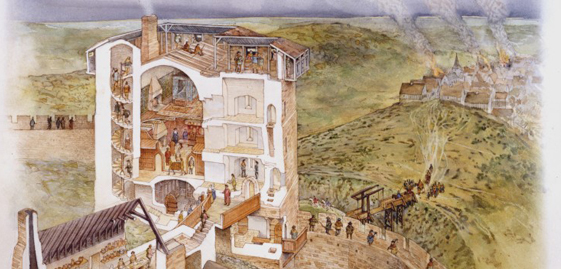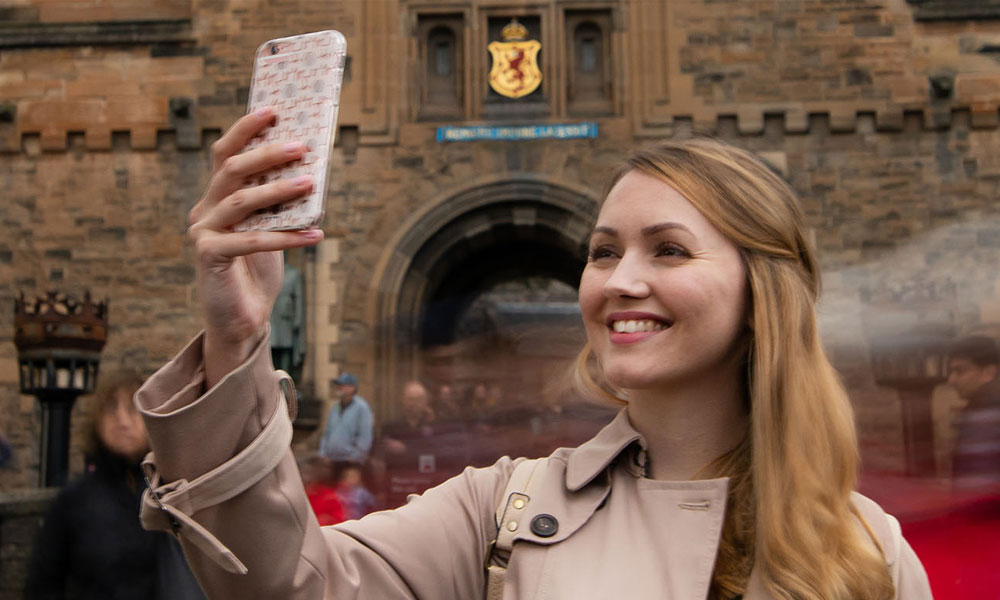The Discovery of David’s Tower

26 September 2017
They found it hidden at the back of the canteen coal cellar: a narrow window that no-one had looked through for centuries.
Three Men and a Mystery
Three respected scholars huddled inside the dark vault deep below Edinburgh Castle to examine the blocked-up opening. Cutting through 2.3m of medieval masonry, the window was a mystery. To find out what lay on the other side, they decided to dig down from above, in the middle of Half-Moon Battery.
It was 1912 and the three Royal Commissioners of Ancient and Historical Monuments of Scotland were about to rediscover a lost landmark that once dominated Edinburgh Castle: David’s Tower.
A Towering Achievement
This mighty building was raised by King David II, son of Robert the Bruce. It served as his own residence, as well as a secure storehouse for royal treasures. It was the chief strength of the castle. But in the final bombardment that ended the Lang Siege in 1573, the tower was sent crashing down by English cannon. Within a few years, its ruins had been sealed inside a new defensive structure: the Half-Moon Battery.
In the 1880s the architect Hippolyte Blanc (who rebuilt the Great Hall) had suggested the coal cellar could be a surviving part of David’s Tower. It branched out from the soldier’s canteen in the Palace and was clearly constructed from older stonework.
William Thomas Oldrieve, one of the three commissioners, later wrote about its rediscovery. The unassuming Englishman was principal architect for Scotland with the Office of Works. He had developed a passion for the country’s historic buildings.
Digging Up David’s Tower
Oldrieve’s workmen dug 1.5m through loose soil from the top of the Half-Moon Battery before revealing the arrow slit from the other side of that medieval wall. But there was more to come. Another 4.5m down, they hit the top of a stone vault. On 23 August, they broke through the vault and continued downwards a further 9m until they reached bedrock. Below the arrow slit was a doorway and a flight of well-worn steps that once led down the Castle Rock. This was once the front door of the stronghold.
Inside, the men found more vaults and passageways cocooned within the walls of the Half-Moon Battery. Within the rubble were cannon balls and fragments of explosive shells, evidence of the castle’s violent heritage. On the tower’s northern side was a gun hole dating the mid-1500s. Once its outer end had been exposed, it looked straight down the Royal Mile.
Oldrieve and his fellow commissioners realised the significance of the discoveries. Here were the remains of David’s Tower, standing almost 15m in places.
Today, you can retrace the footsteps of Oldrieve and his colleagues, visiting much of what is left of David’s Tower. Remember to share your pictures with us on Twitter @edinburghcastle.




